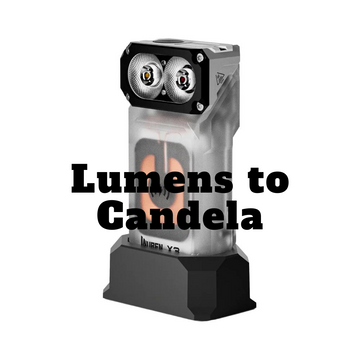
Lumens: Quantifying Total Light Output
Definition of Lumens:Lumens (lm) serve as a quantitative measure of a light source's total light output. They represent the perceived brightness of a light source as observed by the human eye.
Calculation of Lumens:
The calculation of lumens takes into account the light source's spectral power distribution and the human eye's sensitivity to different wavelengths. Manufacturers determine lumens through standardized calculations and precise photometric measurements, ensuring consistent comparisons between different light sources.
Significance of Lumens in Lighting Design:
Lumens play a crucial role in designing lighting systems to achieve desired levels of brightness. Understanding lumens enables designers to select appropriate light sources for specific applications, ensuring optimal lighting conditions.
Candela: Measuring Light Intensity
Definition of Candela:Candela (cd) quantifies the luminous intensity of a light source. Candela, on the other hand, measures the luminous intensity of a light source—the amount of light energy emitted within a specific solid angle in a particular direction.
Measurement of Candela:
Candela is measured using specialized equipment such as a goniophotometer, which captures the distribution of light intensity over various angles. This measurement is particularly important in applications requiring focused or directional lighting.
Applications of Candela:
Candela is crucial in areas such as spotlights, headlights, stage lighting, and other applications where light intensity and directionality are essential.
Lumens and Candela
Illuminance and Luminous Intensity:Illuminance, measured in lux (lx), quantifies the amount of light that falls onto a surface. It is determined by both the luminous intensity (candela) of the light source and the distance between the source and the surface.
Conversion Factors between Lumens and Candela:
Converting between lumens and candela requires considering the beam angle of the light source. Narrow beam angles concentrate light, resulting in higher candela values for the same lumen output compared to wider beam angles.
The Inverse Square Law:
The inverse square law states that illuminance decreases as the distance from the light source increases. Understanding this law helps estimate the required lumens or candela for adequate lighting at specific distances.
Practical Examples and Applications
Lighting Selection for Different Spaces:
Choosing the right lighting based on desired illuminance levels and beam angles, ensuring the lighting meets the specific requirements and ambiance of each space.
Comparing Light Bulbs based on Lumens and Candela:
Evaluating light bulb specifications to make informed purchasing decisions, considering factors such as energy efficiency and intended lighting applications.
Lumens and Candela in Architectural Lighting Design:
Strategic placement of light sources with varying beam angles and lumen outputs to highlight architectural features, create focal points, and set desired atmospheres.
In conclusion, a solid understanding of lumens and candela is crucial in comprehending the characteristics and performance of light sources. This knowledge empowers individuals to make well-informed lighting decisions, optimize lighting designs, and curate visually captivating environments. By harnessing the relationship between lumens and candela, we can strive towards achieving efficient lighting solutions that enhance our overall visual experiences.
Related Article:
Candela to Lumens
What is Lumen




